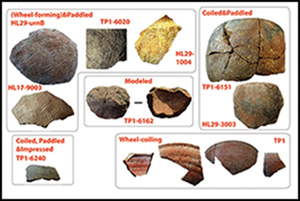Article contents
Late prehistoric and early historic chronology of Myanmar: a four-millennia sequence from Halin
Published online by Cambridge University Press: 16 January 2024
Abstract

Myanmar is located within an important geographic corridor of prehistoric demographic and technological exchange, yet relatively few archaeological sites have been securely dated. Here, the authors present a new radiocarbon chronology for Halin, a UNESCO-listed complex in the north-central Sagaing Division of Myanmar, which contributes to the generation of nuanced regional chronologies and to improving the temporal resolution of Southeast Asia more generally. Discussion of 94 radiocarbon determinates, together with site stratigraphy and pottery traditions, provides a chronological sequence from the early third millennium BC to the early second millennium AD. Corroboration of the beginning of this sequence would place Halin as the oldest currently dated Neolithic site in Mainland Southeast Asia and would provide support for the two-layer model of Neolithic migration.
Information
- Type
- Research Article
- Information
- Copyright
- Copyright © The Author(s), 2024. Published by Cambridge University Press on behalf of Antiquity Publications Ltd
References
- 3
- Cited by

